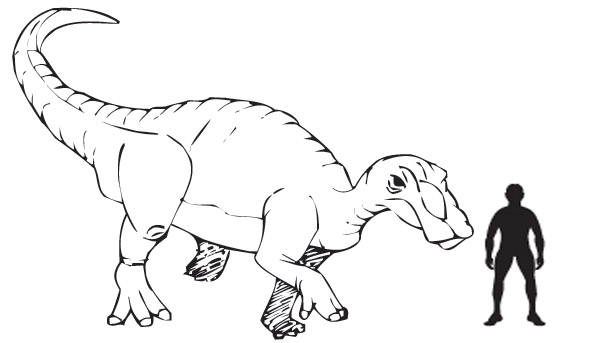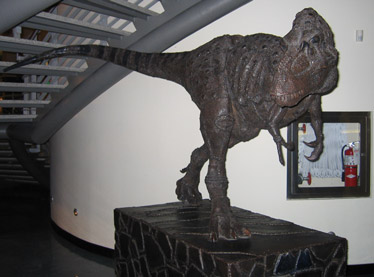Theropod Teeth and Hadrosaur Fossilised Bones found as Sewer is Constructed
The construction of a sewer system in the city of Edmonton (Alberta, Canada), ground to a halt last week after a number of seventy-million-year-old dinosaur fossils and a meat-eating dinosaur’s tooth were unearthed. The city of Edmonton is a well-known hot bed for dinosaur bones and discoveries, indeed two dinosaurs, both Cretaceous ornithischians, are named after the city (Edmontonia and Edmontosaurus), but city construction engineers were somewhat surprised to find a new sewer complex held up by dinosaurs. The fossils have been tentatively described as the bones of a duck-billed dinosaur (Edmontosaurus) and the teeth of a tyrannosaur-like dinosaur called Albertosaurus.
Dinosaur Fossils
The tooth is beautifully preserved, and if you look carefully in the images shown on media outlets, the finely serrated edge of the tooth can be seen on the lowest side. The serrations are known as denticulations and help distinguish different meat-eating dinosaur’s teeth, although the D-shape and size of this particular tooth is unmistakeably tyrannosauroid. The fact that only the crown has been recovered (the root is absent) indicates that this tooth was lost when the tyrannosaur was alive, perhaps the broken tooth got washed into sediments that contained the hadrosaur bones or perhaps the tooth was lost as the meat-eater scavenged the duck-billed dinosaur’s carcase.
A Superb Statue of the Canadian Tyrannosaur Albertosaurus
Picture credit: Everything Dinosaur
The picture of a beautiful sculpture of Albertosaurus was taken by an Everything Dinosaur, team member a few years ago, whilst working in Toronto. Not sure where the statue was but we think it was on the ground floor of the CN Tower.
It was a keen eyed, ground-works crew member who spotted a dinosaur bone in one of the areas that the team had been digging through in preparation for the laying of a new sewer section. Once the bone had been identified, work was stopped immediately to permit a more thorough examination of the rock strata.
PhD palaeontology student, Mike Burns from the University of Alberta confirmed that the remains were indeed Dinosauria. The finds include a well-preserved tooth of a tyrannosaur (most likely to be an Albertosaurus), as well as part of a femur, possibly from the hadrosaur Edmontosaurus. It is appropriate to find the fossilised bones of Edmontosaurus in the city of Edmonton.
Given the opportunity to explore the excavated area in more detail, a number of other bones were discovered, located approximately thirty metres away from the original discoveries. In a news release from the Alberta Provincial Government a number of fossilised bones are described including a vertebrae (back bones). The bones and other fossil material will be carefully removed from the sewer site this week and transported to the Royal Tyrrell Museum (Drumheller, Alberta) for further analysis and study. The fossils are from the Late Cretaceous and estimated to be around 70 million years old.
A Scale Drawing of the Hadrosaur Edmontosaurus

Picture credit: Everything Dinosaur
To view models and replicas of Late Cretaceous dinosaurs such as tyrannosaurs and duck-billed dinosaurs: Wild Safari Prehistoric World Figures.
Andrew Neuman, Executive Director at the Royal Tyrrell Museum stated:
“We will work with the University of Alberta palaeontologists to ensure there is someone on site as the material is uncovered so the fossils are preserved without causing any project delays for the city.”
In praising the cooperation between different departments and museums, Andrew Neuman added:
“The city of Edmonton should be commended for doing the right thing – this is a great example of how we can all work together to preserve Alberta’s heritage.”
The Canadian state of Alberta is a very important location as far as Late Cretaceous dinosaur discoveries go, the region has yielded a vast number of fossils of dinosaurs and other Mesozoic creatures. Just why Alberta has so many fossils has been the subject of some debate. One theory suggests that during the Late Cretaceous the tropical floodplains and coastal areas that were to become Alberta were subject to violent storms and the flooding led to the deposition of large numbers of dinosaur bones.
To read more about this theory: Northern Alberta Centrosaurine Bonebed – World’s Biggest Dinosaur Grave Found.







Leave A Comment